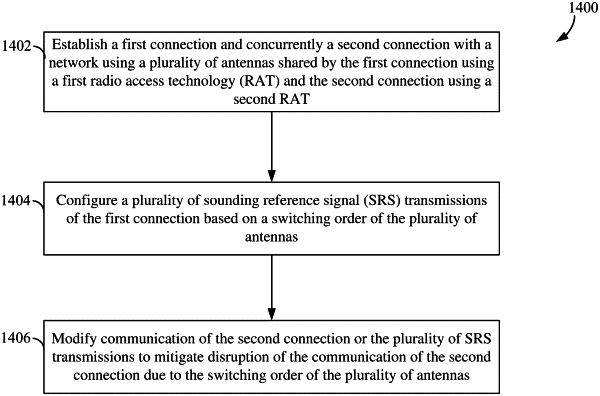| CPC H04B 7/0602 (2013.01) [H04L 5/0048 (2013.01); H04W 76/15 (2018.02)] | 21 Claims |

|
1. A method of wireless communication at an apparatus a user equipment (UE), comprising:
establishing a first connection and concurrently a second connection with a network using a plurality of antennas shared by the first connection using a first radio access technology (RAT) and the second connection using a second RAT;
configuring a plurality of sounding reference signal (SRS) transmissions of the first connection based on a switching order of the plurality of antennas; and
modifying communication of the second connection or the plurality of SRS transmissions to mitigate disruption of the communication of the second connection due to the switching order of the plurality of antennas, wherein modifying the communication of the second connection or the plurality of SRS transmissions comprises at least one of:
rescheduling, by the UE, a time for search, reception, or measurement of at least one of a primary synchronization signal (PSS), a secondary synchronization signal (SSS), a cell-specific reference signal (CRS), or a physical broadcast channel (PBCH) of the second connection to occur outside of a time interval associated with the plurality of SRS transmissions;
blanking an uplink transmission of the second connection in the time interval overlapping the plurality of SRS transmissions of the first connection; or
omitting the plurality of SRS transmissions in the time interval to avoid disrupting the communication of the second connection in the time interval.
|